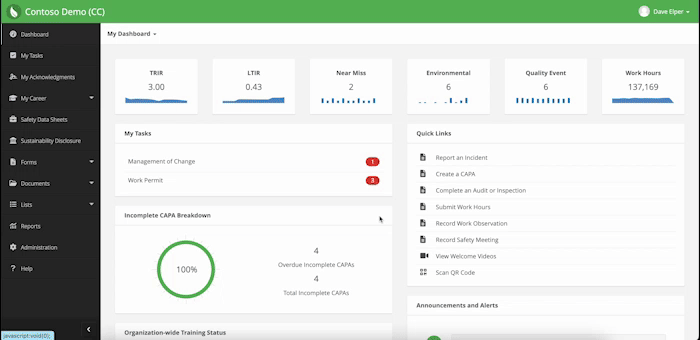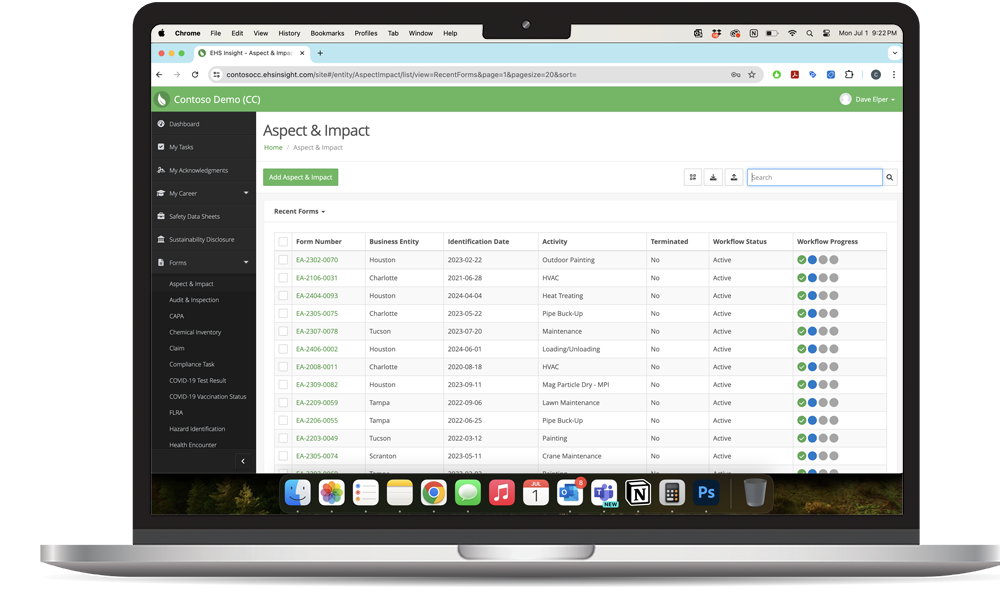Environmental Aspects & Impacts Management Module
The EHS Insight Environmental Aspects & Impacts Management Module is designed to streamline your organization's efforts to comply with ISO 14001 standards. By providing robust tools for tracking and managing environmental activities, it ensures that all aspects and impacts are thoroughly monitored.
This module helps organizations identify, assess, and mitigate environmental risks, thereby minimizing their overall environmental footprint.

Minimize Environmental Impact & Optimize Operational Efficiency
This module boosts operational efficiency. By centralizing the management of environmental aspects and impacts, it simplifies reporting and improves data accuracy. This enables organizations to make informed decisions that align with their environmental goals and operational strategies, ultimately fostering a more sustainable and efficient business model.
Improve the Way You Manage Your Environmental Activities
Submit activities, outline all relevant aspects related to the activity, and evaluate the impact of each aspect.

The Benefits of EHS Insight's Environmental Management

Water & Waste
Regardless of where in the world your organization is working, EHS Insight can help ensure you are meeting environmental requirements. Track air permit requirements, collect and manage data related to water discharges, and manage waste transporters, disposal facilities, and other key data.
EHS Insight Saves Time, Saves Money, and Improves Safety Cultures
Sustainability Metrics
Improve the way you manage your sustainability data. Gather, track, measure, and improve upon energy and resource consumption, waste production, recycling, carbon emissions, and other pollution and sustainability factors. Ensure the highest quality sustainability indicators using data validation and an automated review process.
Compliance Tasks
Ensure compliance with regulatory, company, and other requirements by planning work in advance and using automation to get it done. Make sure all requirements are met, and that nothing slips through the cracks.
Permits
Ensure compliance with every permit requirement with automated task tracking and reminders. Depend on automated workflow to ensure compliance with permit obligations and use reminders to better manage expiration and renewal dates. Produce regulatory reports with a single click and impress auditors with instant access to all records.



